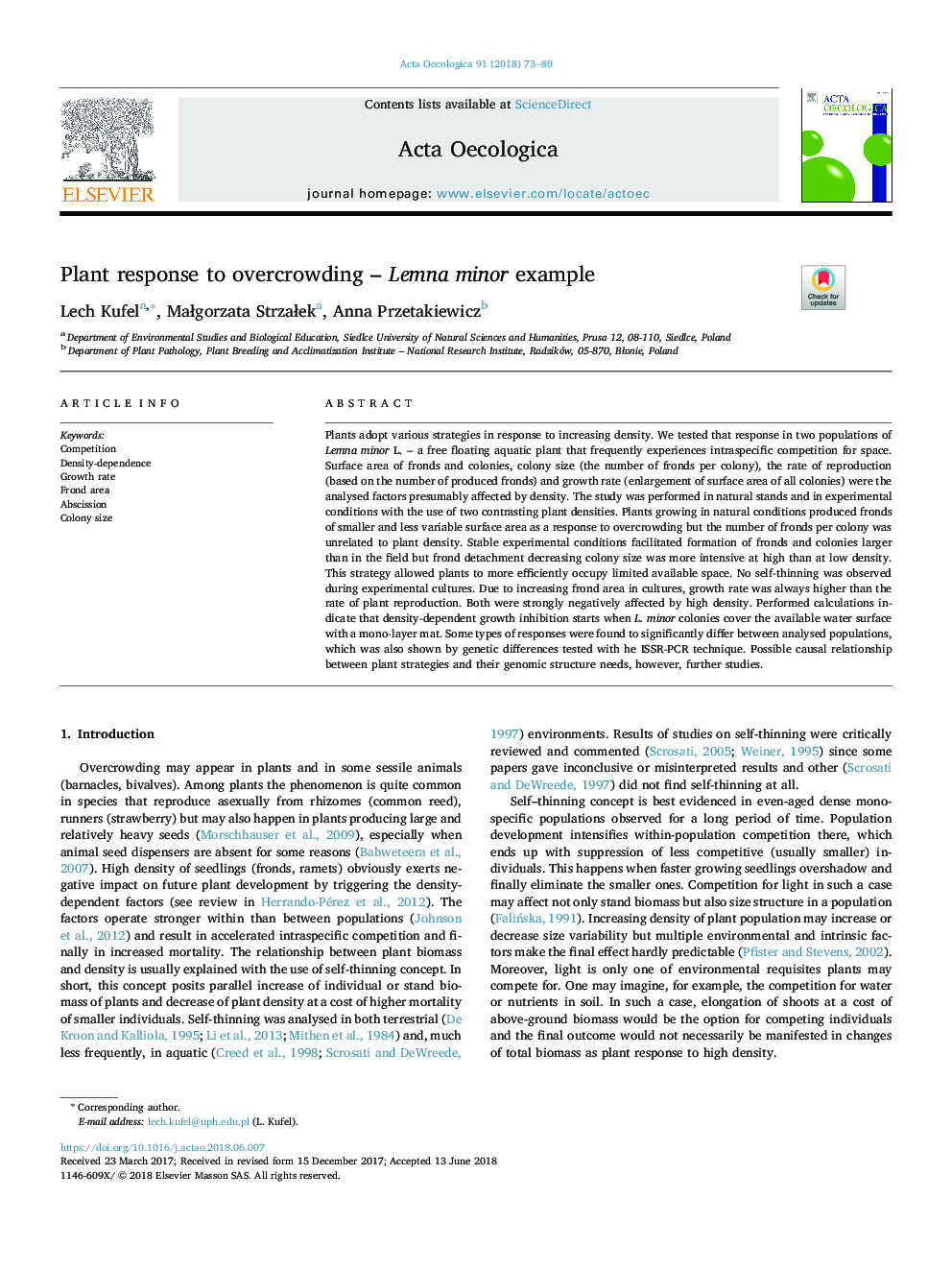| Article ID | Journal | Published Year | Pages | File Type |
|---|---|---|---|---|
| 8846456 | Acta Oecologica | 2018 | 8 Pages |
Abstract
Plants adopt various strategies in response to increasing density. We tested that response in two populations of Lemna minor L. - a free floating aquatic plant that frequently experiences intraspecific competition for space. Surface area of fronds and colonies, colony size (the number of fronds per colony), the rate of reproduction (based on the number of produced fronds) and growth rate (enlargement of surface area of all colonies) were the analysed factors presumably affected by density. The study was performed in natural stands and in experimental conditions with the use of two contrasting plant densities. Plants growing in natural conditions produced fronds of smaller and less variable surface area as a response to overcrowding but the number of fronds per colony was unrelated to plant density. Stable experimental conditions facilitated formation of fronds and colonies larger than in the field but frond detachment decreasing colony size was more intensive at high than at low density. This strategy allowed plants to more efficiently occupy limited available space. No self-thinning was observed during experimental cultures. Due to increasing frond area in cultures, growth rate was always higher than the rate of plant reproduction. Both were strongly negatively affected by high density. Performed calculations indicate that density-dependent growth inhibition starts when L. minor colonies cover the available water surface with a mono-layer mat. Some types of responses were found to significantly differ between analysed populations, which was also shown by genetic differences tested with he ISSR-PCR technique. Possible causal relationship between plant strategies and their genomic structure needs, however, further studies.
Related Topics
Life Sciences
Agricultural and Biological Sciences
Ecology, Evolution, Behavior and Systematics
Authors
Lech Kufel, MaÅgorzata StrzaÅek, Anna Przetakiewicz,
